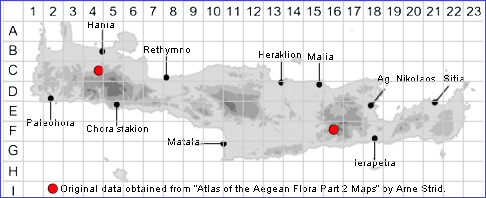SPECIES DESCRIPTION
LYTHRUM TRIBRACTEATUM
Family and Genus:- See- LYTHRACEAE
Common Names:- None
Homotypic Synonyms:- None
Meaning:- Lythrum (Gr) Gore, A name used by the Greek physician and botanist
Dioscorides, may refer to the flower colour.
Tribracteatum (L) With three bracts.
General description:- Erect to decumbent, glabrous to scabrid annual.
Stems:-
1) 5-30 cm, with 4 raised lines, usually with numerous divaricate branches.
Leaves:-
1) 3-12(-18) x 1-3(-5) mm, linear to oblong-oblanceolate, alternate, those on the
main stem often much larger than those on the branches.
Flower:-
1) 4- to 6-merous, solitary in the leaf-axils, numerous, subsessile, bracteoles
usually as long as the hypanthium, but sometimes minute.
2) Hypanthium, 5-6 x 1 mm, narrowly cylindrical, tapered to the base.
3) Epicalyx-segments and sepals 0·5 mm or less, subequal, inconspicuous and
usually involute in fruit.
4) Petals, 2-3 mm, oblong, purple.
5) Stamens, 4-6.
6) Style, c. 2 mm.
Fruit:-
1) Capsule, cylindrical, equalling or slightly exceeding the hypanthium.
Key features:-
1) Style, 1·5-2 mm.
2) Hypanthium, in fruit 3-6 times as long as wide.
3) Epicalyx-segments, less than 0·5 mm, triangular, about equalling the sepals,
involute in fruit.
Habitat:- In mud by lakes and vernal pools. 0-400(-1300) m.
Distribution:- Few and scattered localities on mainland Greece and Peloponnisos.
- Widespread in the Mediterranean region and SW Asia. Very rare on Crete
currently known from only two locations. (see map).
Flowering time:- May-July sometimes later.
Photos by:- Courtesy of Wiki-Commons

